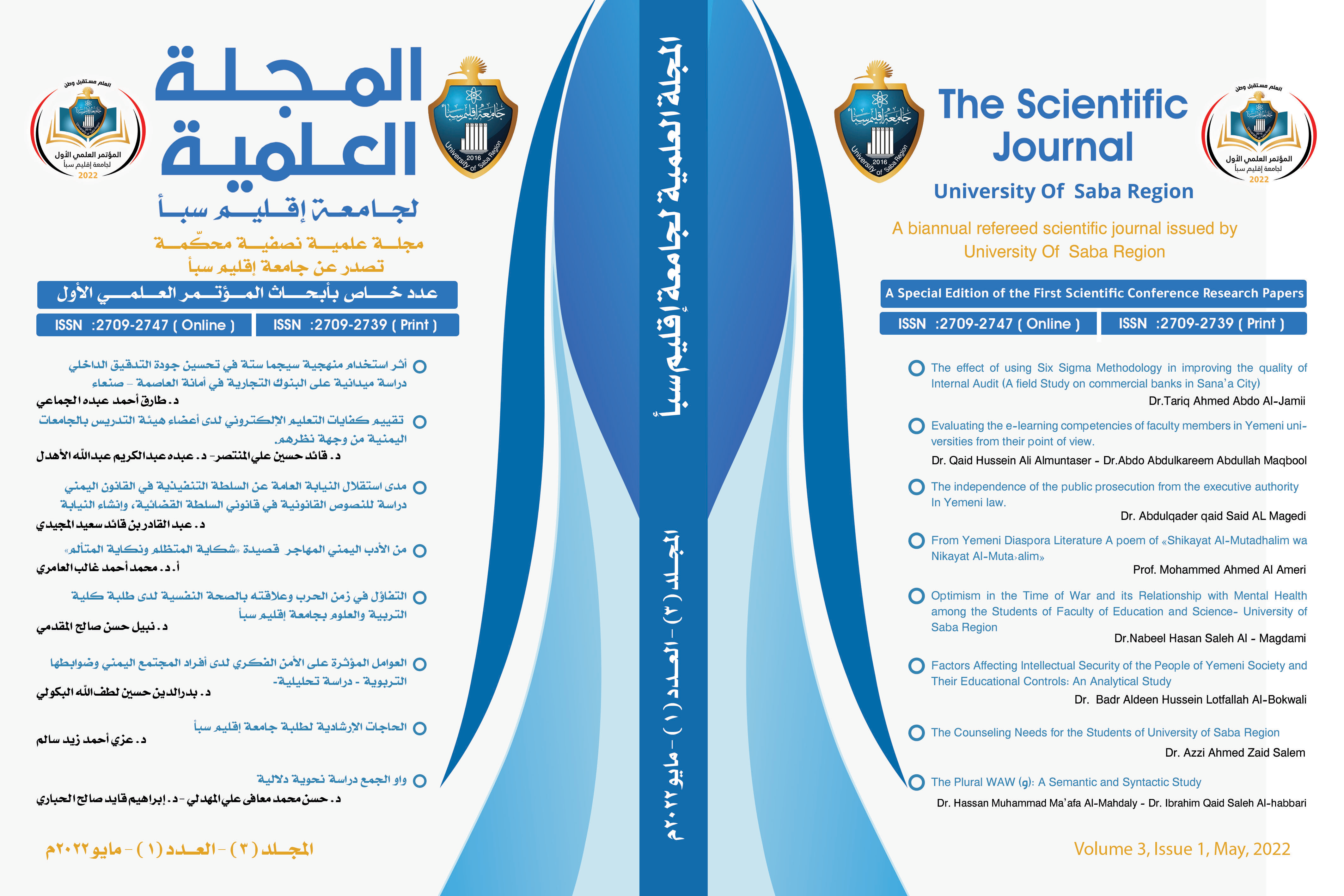The Plural WAW (و): A Semantic and Syntactic Study
DOI:
https://doi.org/10.54582/TSJ.2.2.17Keywords:
Waw, plural, Waw of coordinating conjunctions, Waw of accompaniment.Abstract
The meaning of plural in the speech of the Arabs - verse and prose - has various connotations، which appear through the context and structures. It is not surprising that (waw) comes to its meaning، whether it is Waw of coordinating conjunctions or Waw of accompaniment. This study، which is entitled “The plural WAW: a semantic and syntactic study” ، follows the descriptive-analytical approach; which aimed to show WAW’s positions and their connotations. In the introduction section، the study dealt with the articulation of (Waw)، its characteristics and importance. In the first section، the researchers discussed the plural (waw) as a Waw of coordinating conjunctions، as well as showing its positions and implications as well as the difference between Waw of coordinating conjunctions and Waw of accompaniment. Then they concluded that (Waw) of coordinating conjunctions means plural، according to Basri and Kufic scholars. It has such characteristics among which is its use for the absolute plural، and the similarity of some letters of conjunctions as: (um)، (Hata- until) ، and it shares (or)، and (ba، and min) in the meaning. Waw of accompaniment comes with its meaning of plural if after it comes a noun (object with it)، or a verb in the present tense that put in the subjunctive form by (an) is most likely implied by it after a pure negation or request.
As they agree that both denote the plural at the same time، and they differ in that the first has no action، and the other works the accusative by means of (an)، and that Waw of accompaniment does not require the participation of the second with the first in the action other than the coordinating conjunctions. The study recommended a set of recommendations، the most important of which are: adopting the study of the rest of the semantics of the meanings of the letter (Waw)، and the research ended with an inclusion of the sources and references.
Downloads
Published
How to Cite
Issue
Section
License
Copyright and Licensing
This journal publishes all scientific materials under the Creative Commons Attribution 4.0 International (CC BY 4.0) , license, which grants you the following permissions:
You are free to:
- Share — copy and redistribute the material in any medium or format for any purpose, even commercially.
- Adapt — remix, transform, and build upon the material for any purpose, even commercially.
- The licensor cannot revoke these freedoms as long as you follow the license terms.
Under the following terms:
- Attribution — You must give appropriate credit , provide a link to the license, and indicate if changes were made . You may do so in any reasonable manner, but not in any way that suggests the licensor endorses you or your use.
- No additional restrictions — You may not apply legal terms or technological measures that legally restrict others from doing anything the license permits.
Notices:
You do not have to comply with the license for elements of the material in the public domain or where your use is permitted by an applicable exception or limitation .
No warranties are given. The license may not give you all of the permissions necessary for your intended use. For example, other rights such as publicity, privacy, or moral rights may limit how you use the material.











